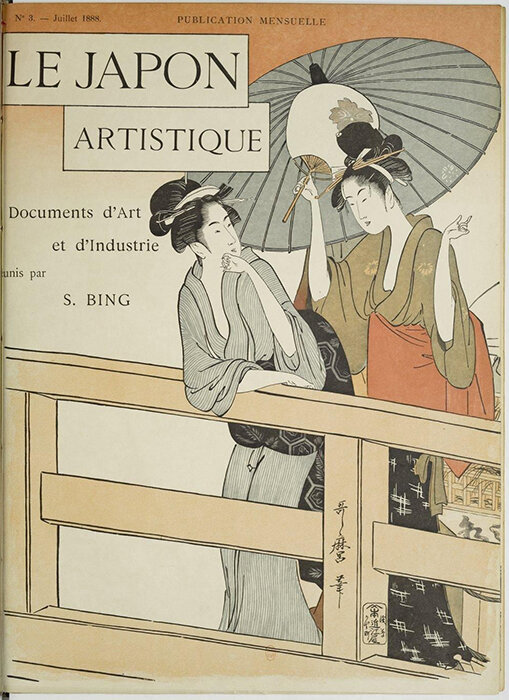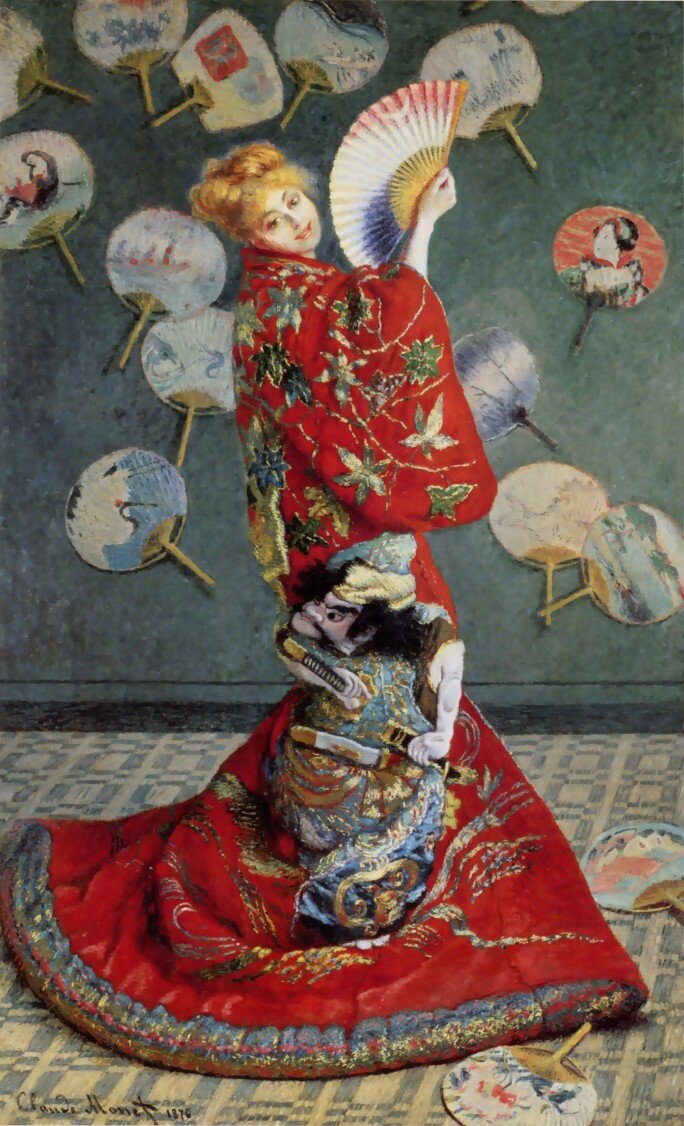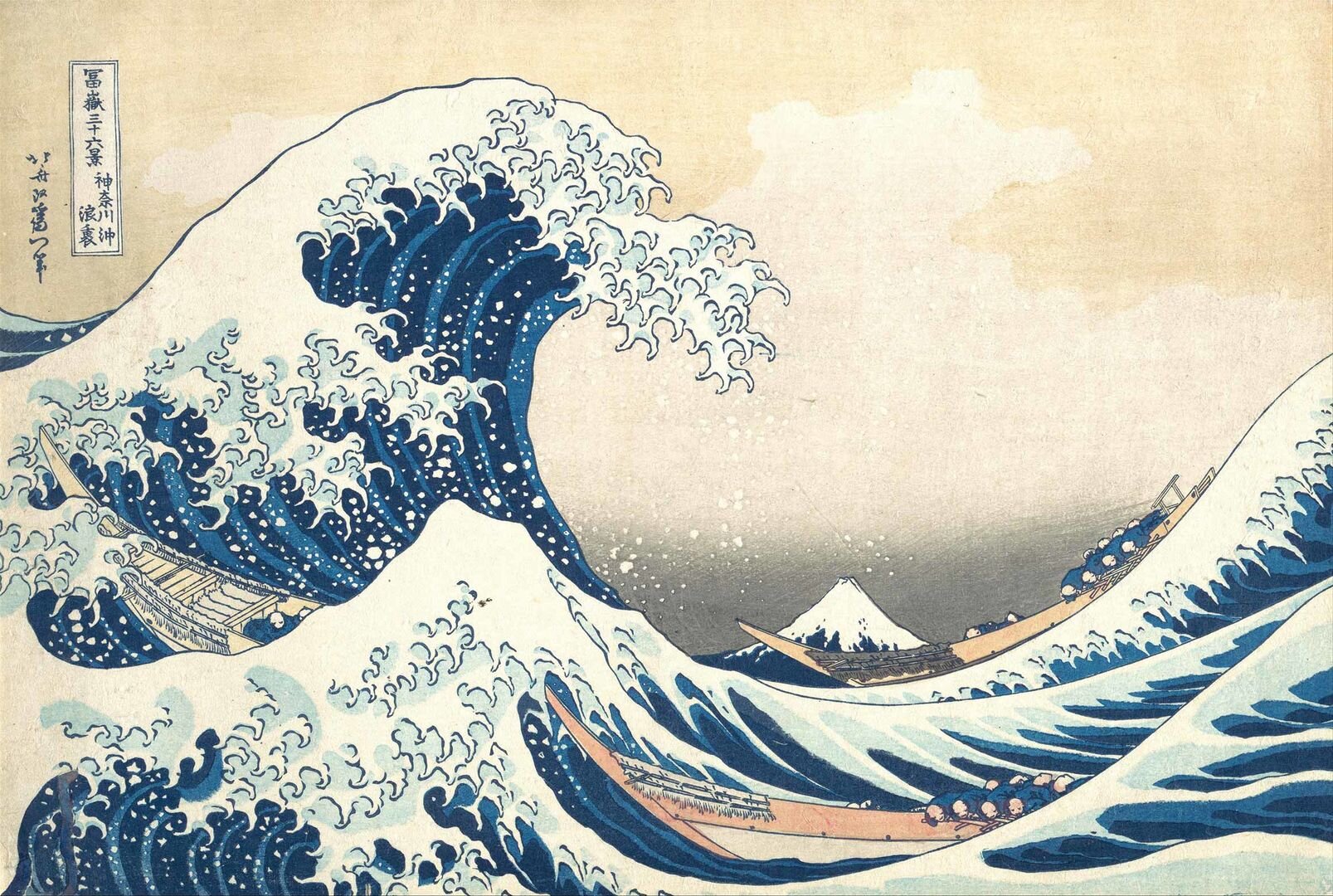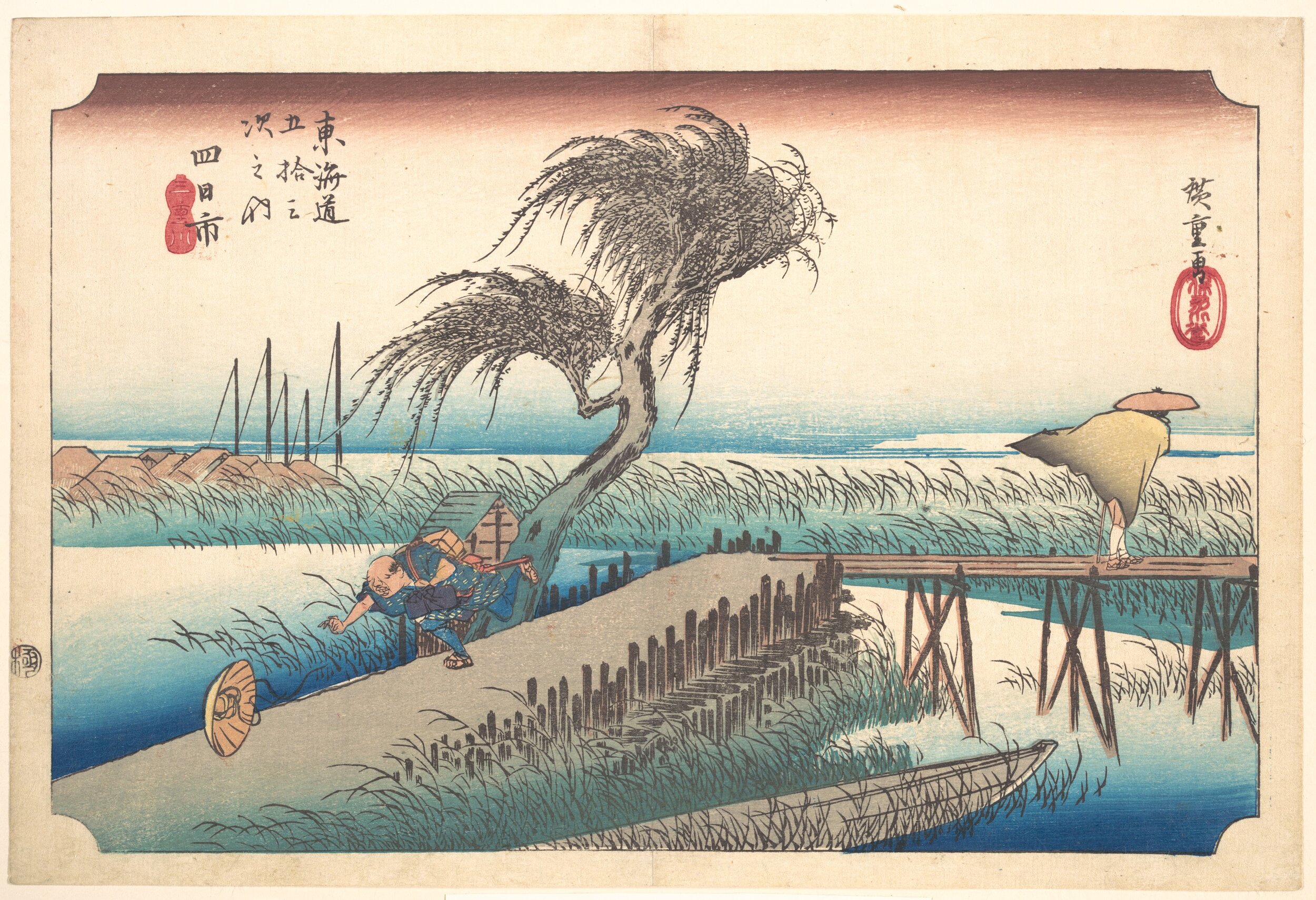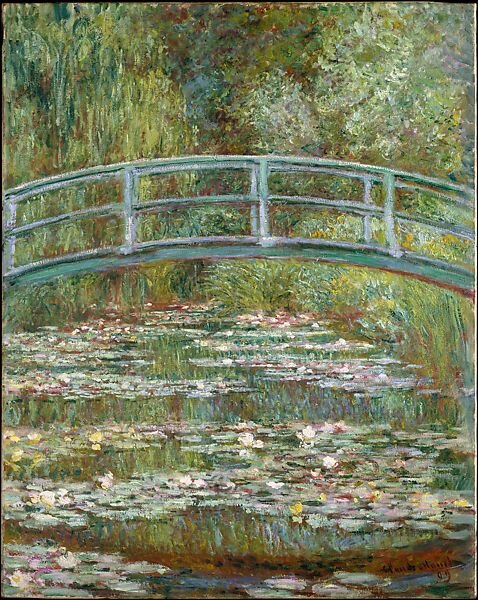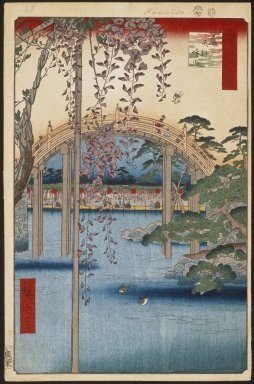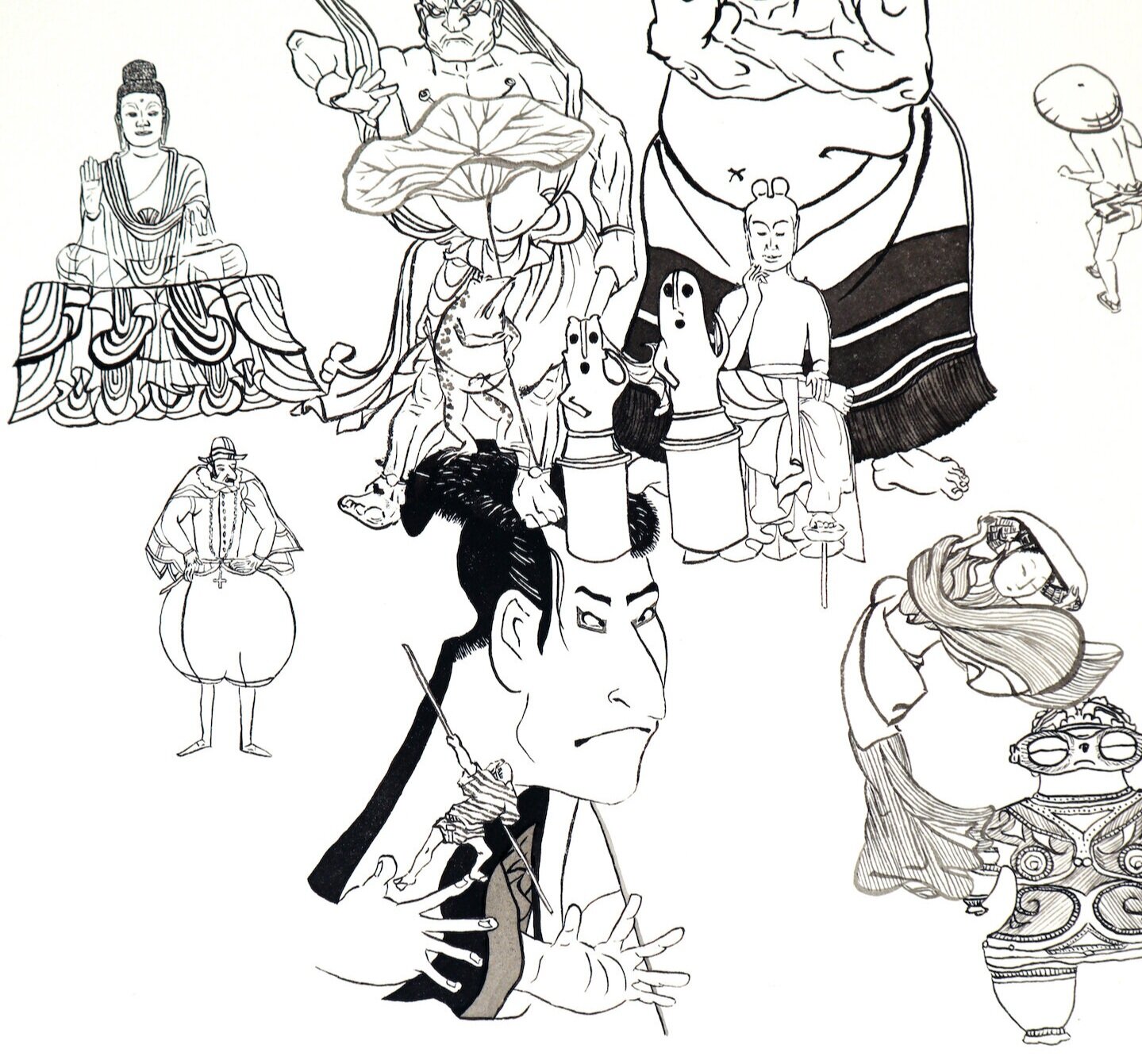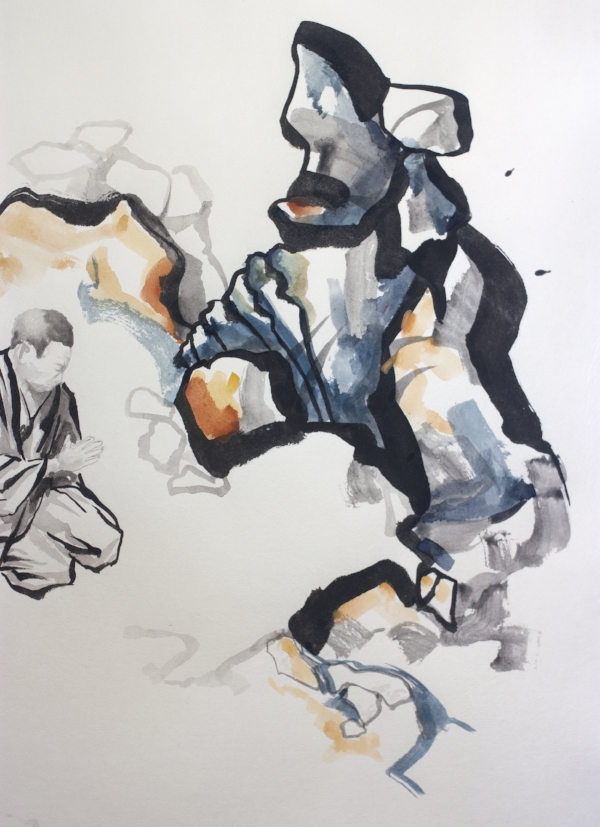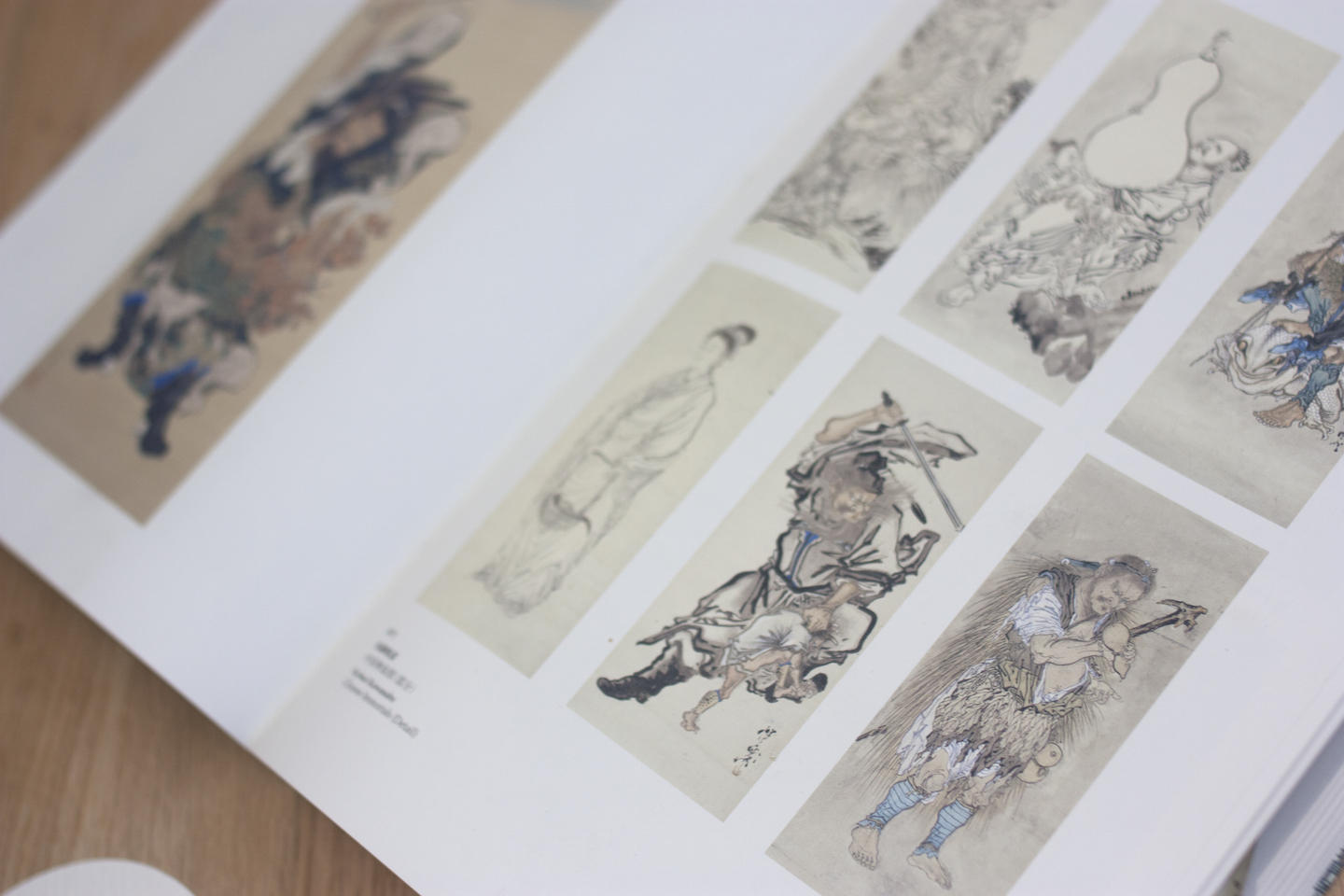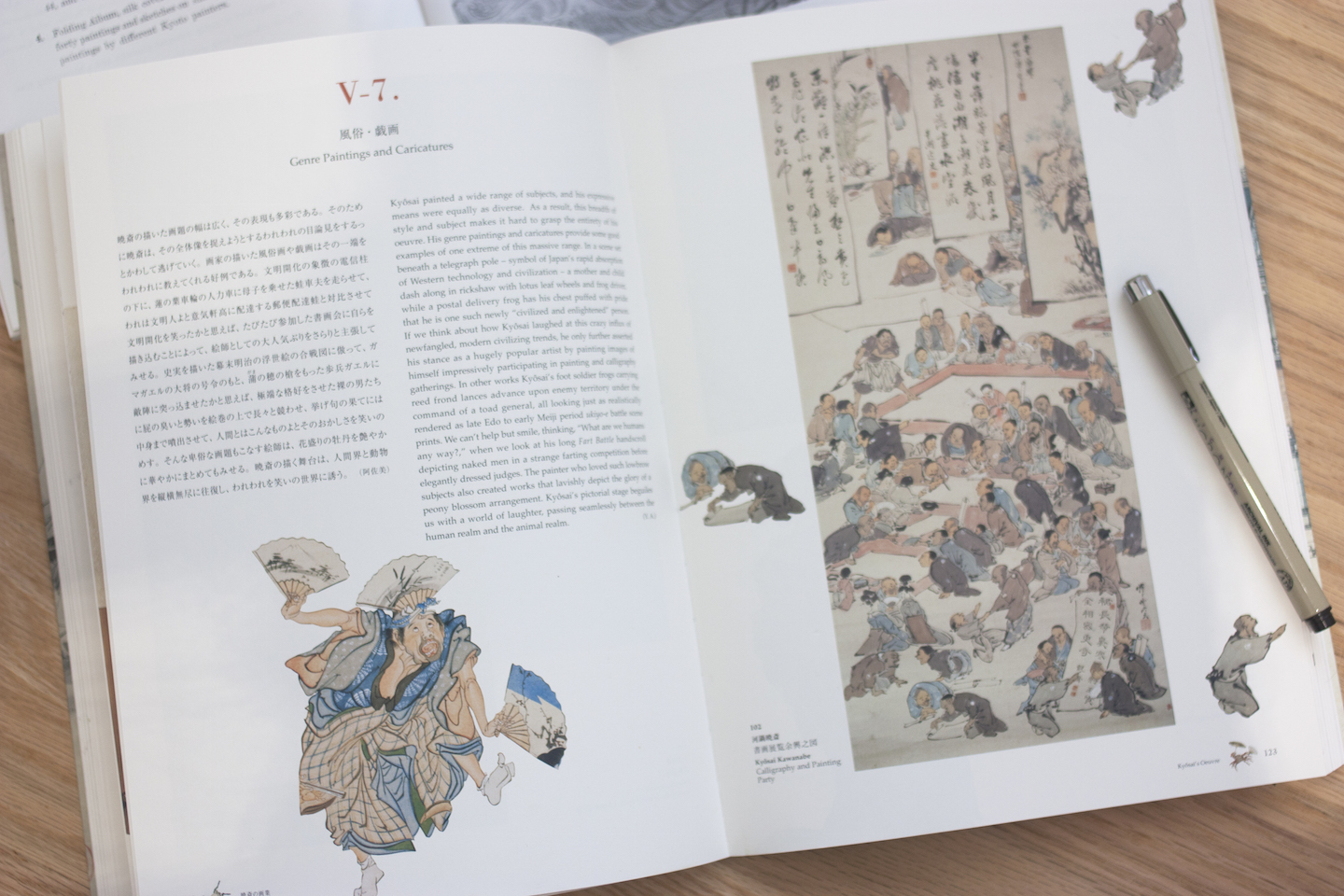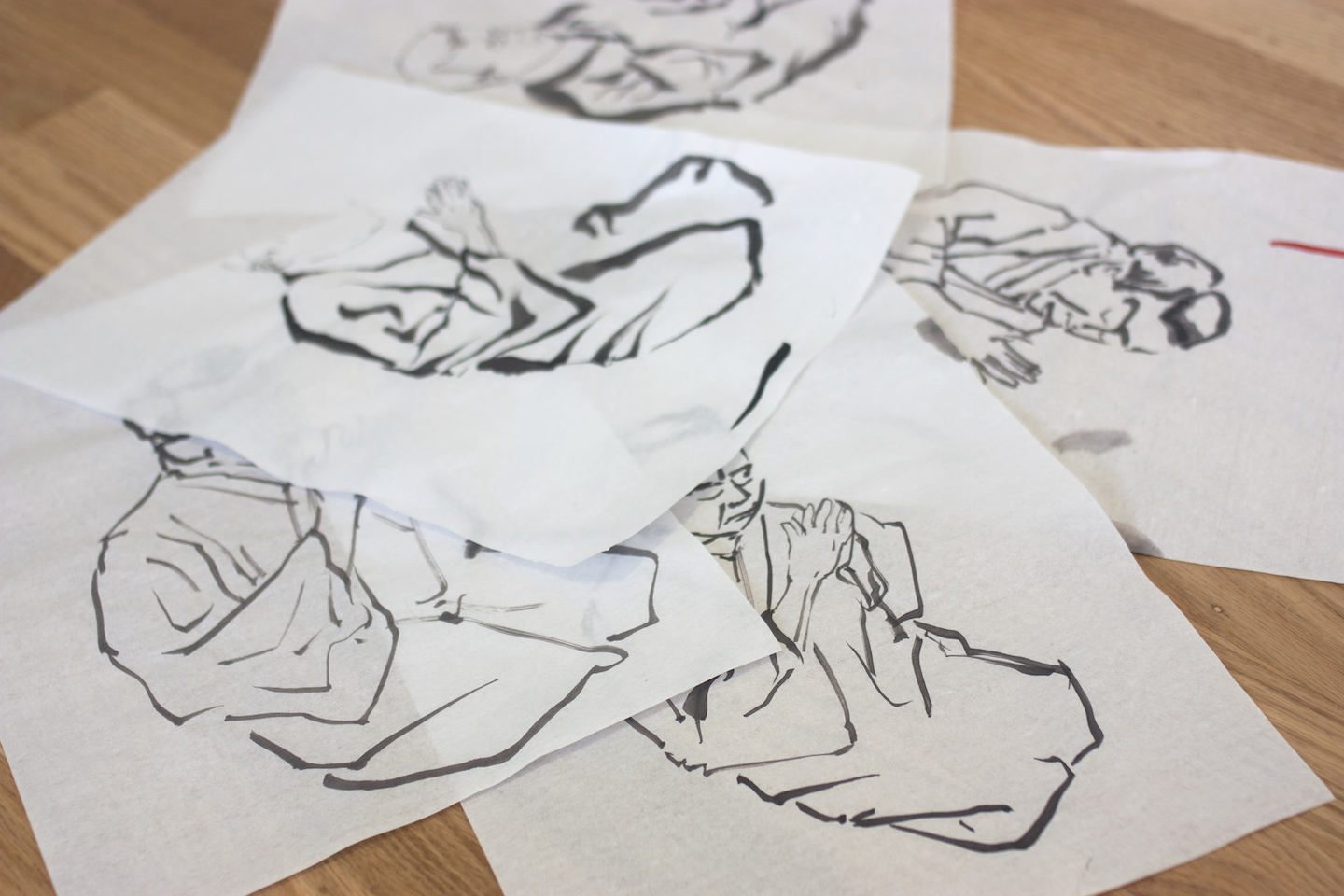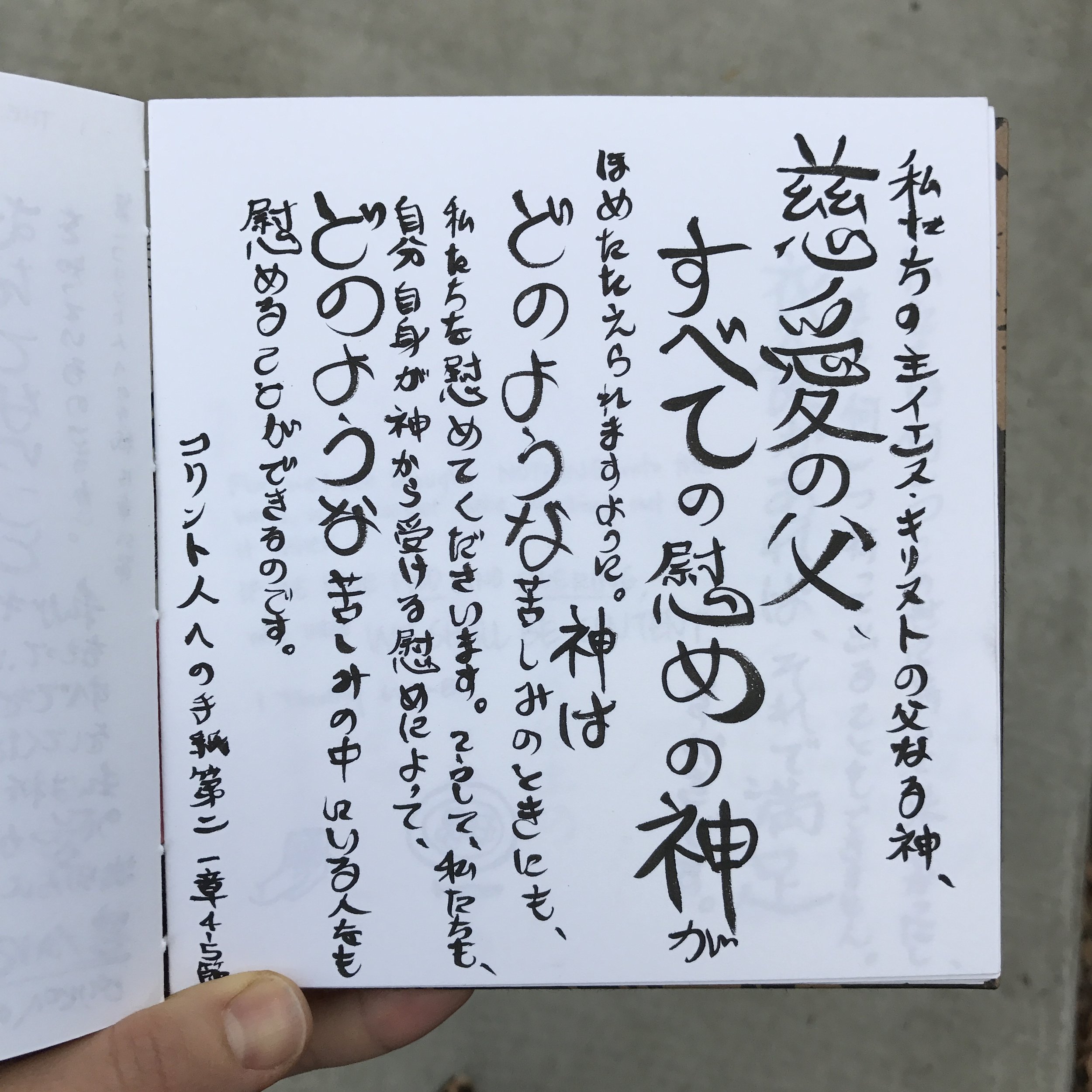You probably know about the Impressionists including Monet, Degas, and Van Gogh, but let's look closer at the influence of Japanese art on their work.
In the late 19th century, Japan (reluctantly) opened to international trade after 200+ years of isolation. Their foreign contact had been limited to trade with China, Korea, and the Ryukyu Islands (now Okinawa). There was one trading post called Dejima, by Nagasaki, used for limited contact with the Dutch - the only European traders during isolation.
From the mid-19th century on once Japan opened up, there was a phenomenon known as japonisme in the West - a taste for Japanese goods including lacquerware, bronzes, kimono, and woodblock prints.
After the forced trade agreements in 1854, how Japan modernized in 50 years during the Meiji period is unprecedented and fascinating, but I'll have to leave that to another time.
Claude Monet, Madame Monet en Costume Japonais, 1875.
Why was Japanese art so popular?
It was fresh, new, and an entirely different aesthetic than what was available in Europe at the time! (On a personal note, I can relate with wanting some new or exciting positive inspiration, especially this year!)
Some distinct characteristics that made the Japanese prints stand out:
flattened space
bold use of color
stylized figures
dramatic, cropped compositions
What is a woodblock print?
A cheap print popular among the urban middle class in Edo (now Tokyo). Each is made of several woodcuts. Each color on the final paper is a separate woodcut, only cut to the shape of that color.
They are often made in series, like TheGreat Wave off Kanagawa by Hokusai, is part of a series called Thirty-Six Views of Mt. Fuji.
Explained: The Traditional Process of Japanese Woodblock Printing (including photos of tools and 4 min video)
The woodblock prints were collected in Japan and in Europe since they were as cheap as a bowl of noodles. Some cost more depending on the artist, but the average was accessible enough to collect many of them.
There was a limit to how many reproductions could be completed from one woodblock set to maintain crisp lines, but they could carve another set of woodblocks to produce the same image if needed.
What are they about?
Anything of interest for the urban class (commoners) in Edo (Tokyo)!
They include portraits of kabuki actors, landscapes of real places, scenes of urban life, scenes of the pleasure quarters and geisha, and stories in history.
They're under the genre of ukiyo-e 浮世絵 which translates to floating world pictures. It originates from a Buddhist term ukiyo referring to the floating world = the transitory, fleeting nature of experience. With the understanding of the brief, fleeting experience of life, there was a pursuit of pleasure especially in Edo (Tokyo).
The popularity of the prints in Europe amongst the urban middle class may come from somewhat shared interests in everyday life events and scenes, rather than subjects like classic literature, poetry, or religious images.
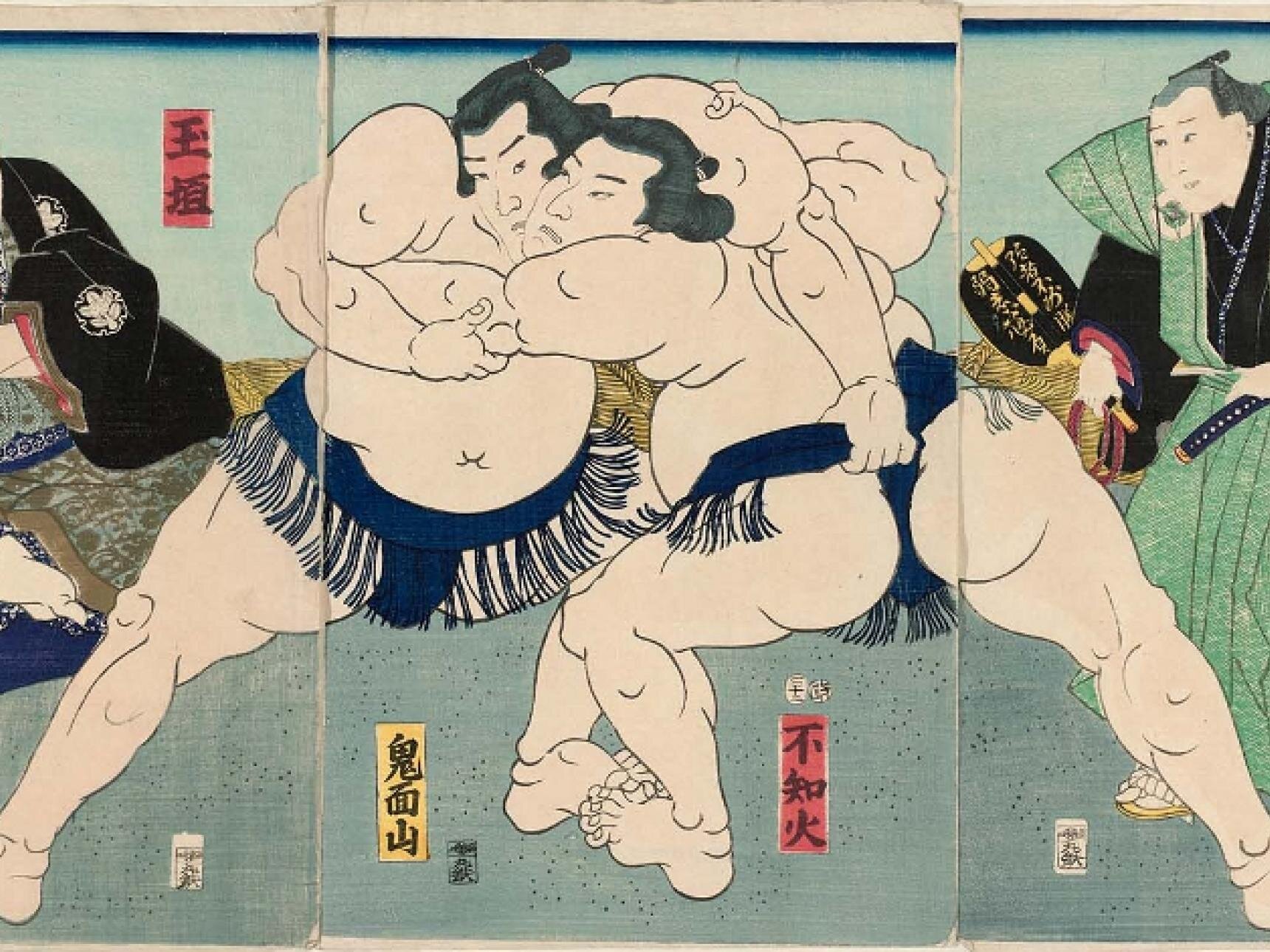

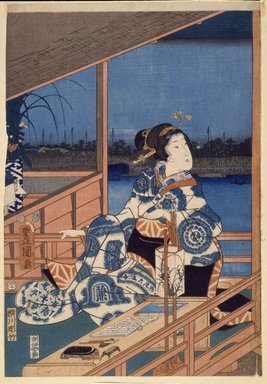
Monet & Hiroshige
Monet is one of the artists that was influenced by Japanese woodblock prints. He, like many others, collected many woodblock prints since the prints were cheap and widely available. Let's look at his Seacoast at Trouville, 1881.
There are some obvious similarities like
color palette
subject (landscape, tree, water)
unusual composition (tree in center, water in background)
Left: Yokkaichi: Mie River from the series Fifty-three Stations of the Tokaido Road, about 1833-1834. Utagawa Hiroshige (Japanese, 1797-1858). Woodblock print, 9 15/16 x 14 9x16 in.
Right: Seacoast at Trouville, 1881. Claude Monet (French, 1840-1926). Oil on canvas, 23 7/8 x 32 in.
But the more interesting part is the subtle influence of recording a fleeting moment in time.
European landscapes were usually scenes of a place that seemed unchanging, receding into the distance. However here we have a tree blocking that distant view, blown by the gusty wind. The painting is as much a depiction of the strong wind that is distinctive of a seacoast as it is a painting of a a tree and land. It's a momentary impression.
We can see the effect of the wind similarly in the woodblock print, Yokkaichi: Mie River from the series Fifty-three Stations of the Tokaido Road by Utagawa Hiroshige.
A hat blown off with a man chasing after it on the left
A robe blown in the wind on the right
All the grass flowing in one direction
Tree branches flowing to the left
Technically it's a scene showing one of the 53 stops along the Tokaido Road (one of the major roads connecting Edo and Kyoto in Japan), but it's also an image of a sudden gust of wind!
Here’s another depiction of a sudden wind! It's easy to relate with these figures holding on to garments, hats, and other possessions.
Ejiri in Suruga Province from the series Thirty-six Views of Mount Fuji, ca. 1830-1832. Katsushika Hokusai (Japanese, 1760-1849). Woodblock print, 9 7/8 x 14 3/4 in.
Some of the more well-known paintings by Monet that show a direct connection from Japanese prints include those from his garden.
He painted 250 oil paintings of his water lilies, sometimes with the Japanese style footbridge.
Monet's bridge in his garden (left image, and painted in the center) was based on Japanese bridges like this one on the right in Edo (now Tokyo)
Center: Bridge over a Pond of Water Lilies, 1899.
One of many paintings by Monet in his garden with a water-lily pond, designed with influence from Japanese gardens and bridges.
Right: Utagawa Hiroshige (Ando) (Japanese, 1797-1858). Inside Kameido Tenjin Shrine (Kameido Tenjin Keidai), No. 65 from One Hundred Famous Views of Edo, 7th month of 1856. Woodblock print, Image: 13 7/16 x 8 3/4 in.
More on Monet's garden, from the MET Museum here.
Water Lilies, 1919. Claude Monet. Oil on canvas, 39 3/4 x 78 3/4 in.
Another artist influenced by Japanese art in more subtle ways: Degas
Degas & Japonisme
Degas is known for his paintings of dancers. He captured candid moments often in practice or backstage. He studied and was influenced by Japanese woodblock prints. (Though it's worth mentioning that as any artist, his influence was broad and not limited to Japanese art.)
His influence from Japanese art does not include Japanese imagery, but rather is evident in his compositions and unexpected vantage points.
Edgar Degas, Dance Class, 1874. Oil on canvas, 32 7/8 x 30 3/8 in.
This diagonal line from front to back, with a field of color on the top half and another on the bottom, is a repeated composition in his paintings.
The composition with a larger subject in the front and repeated similar forms receding back is seen in Japanese woodblock prints also.
Utagawa Hiroshige (Ando) (Japanese, 1797-1858). Moonlight View of Tsukuda with Lady on a Balcony, from the series Fashionable Genji, 1853, 11th month. Woodblock color print, Sheet of a: 14 1/2 x 10 1/8 in.
Edgar Degas, Dancers Practicing at the Barre, 1877. Mixed media on canvas, 29 3/4 x 32 in.
The watering can and dancers repeat the same silhouette. Repetition of form like this to create a rhythm is seen also in the famous Great Wave.
In Hokusai's composition, the wave in front of the large wave mimics the shape of Mount Fuji in the background.
The edges of the waves as they break are curled over like claws and repeat over and over across the left side, carrying your eye across from right to left. Japanese writing is traditionally right to left so that is a natural flow of the eye when looking at this print.
In summary, Japonisme is broad, referring to the popularity of Japanese goods during the late 19th century. It was evident in a variety of ways for Western artists of that time, including collecting or painting Japanese objects, or subtle influences such as color and composition.
That wraps up our mini lesson.
I hope you enjoyed reading about Japonisme!
This is only a glimpse of two artists, but if you do some more reading on Japonisme you'll come across many others, and a hundred fascinating rabbit trails.
If there are any other topics you're curious about, please comment and let me know!
